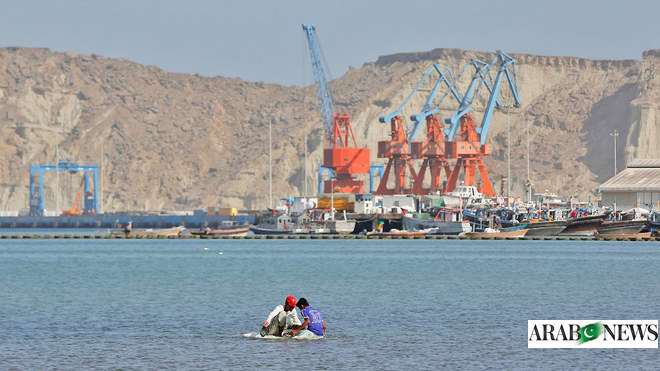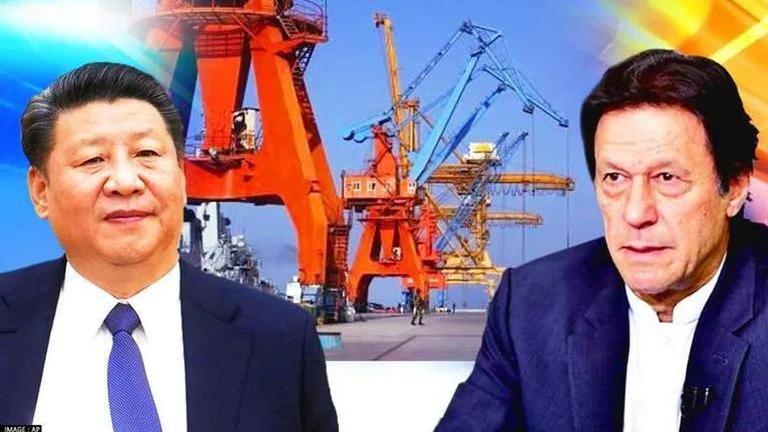China slowly retreating from Pakistan’s Belt and Road
Beijing is backing away from its initial $60 billion commitment to the China-Pakistan Economic Corridor project
By
FM SHAKIL - DECEMBER 26, 2020
https://asiatimes.com/2020/12/china-slowly-retreating-from-pakistans-belt-and-road/
PESHAWAR – Pakistan’s army is set to take near-total control of the Beijing-financed China-Pakistan Economic Corridor (CPEC), a US$60 billion infrastructure building plan replete with railways, roads, ports and special economic zones (SEZs) that is key to China’s global Belt and Road Initiative (BRI).
A bill in Pakistan’s parliament will give the powerful military a firmer hold over the initiative and its related multi-billion dollar contracts, a martial move some see as aimed at reassuring Beijing that their investments will be more secure amid militant attacks on Chinese engineers and others facilitating the infrastructure projects.
The move comes amid rising indications China is backing away from its initial financial promises to Pakistan under the ambitious scheme.
Recent media reports, citing data compiled by Boston University researchers in the United States, note that overall lending by the state-backed China Development Bank and the Export-Import Bank of China declined from a peak of $75 billion in 2016 to just $4 billion last year. Provisional 2020 figures show that amount shrunk to around $3 billion in 2020.
The belt-tightening is believed to be in line with Beijing’s so-called “rethink strategy” for its US$1 trillion BRI, which is under broad fire for “structural weaknesses” including opacity, corruption, overlending to poor countries resulting in “debt traps” and adverse social and environmental impacts, the Boston University research said.
Initiated in 2013, the BRI is Chinese leader Xi Jinping’s grand plan to connect Asia with Africa and Europe via land and maritime trade networks and, perhaps most importantly, create new routes for China’s strategically vulnerable fuel imports shipped by sea mostly from the Middle East.
The CPEC is critical to Beijing’s latter strategic aim of providing an alternative overland route for China’s fuel shipments through Pakistan that bypasses the congested Malacca Strait, which security analysts predict the US could readily block to strangle China’s economy in any conflict scenario.
It is yet to be seen how diminished Chinese lending will impact the CPEC, however several important related projects are now stalled or are running behind schedule due to a lack of financing. Of 122 announced CPEC projects, only 32 have been completed as of the third quarter of this fiscal year.
Some experts believe that Beijing’s trade war with the US is one factor behind the shift in China’s global lending strategy and apparent retreat from the giant infrastructure initiative in Pakistan.
Others believe documented corruption by Chinese companies involved in the CPEC, particularly in the power sector, has impelled Chinese financial authorities to cut down their lending exposure to Pakistan.
A recent inquiry conducted by the Security and Exchange Commission of Pakistan found irregularities worth over $1.8 billion in the power sector, with 16 mostly Chinese firms involved in the CPEC receiving undue subsidies and causing huge financial losses to the national exchequer.
Militants in Balochistan province, meanwhile, have intensified their attacks on CPEC projects and Chinese nationals working on them, raising the security costs and political risks of the projects. Islamabad’s move to give the military more control over the scheme is a clear attempt to mollify China’s rising security concerns.
A high-placed source in Pakistan’s Planning Ministry told Asia Times on condition of anonymity that Beijing has principally agreed to allow Pakistan to form a new joint venture mechanism with companies other than Chinese state-owned or private enterprises to stimulate CPEC project progress including on a multi-billion dollar railway upgrade.
“We certainly need foreign investors to pump in funds for the mega CPEC projects including $6.2 billion worth of Rehabilitation & Up-gradation of Karachi-Lahore Peshawar Railway Track (ML-1) and half a dozen special economic zones in the width and breadth of the country,” the source said.
The much-touted 1,872-kilometer long ML-1 project is moving at a snail’s pace due to China’s reluctance to fund the project at a paltry 1% return on investment. China is also reportedly unhappy with the government’s decision to trim the project’s cost from $8.2 billion to $6.2 billion due to its rising debt load.
The slow execution of top-line CPEC projects, caused largely by China’s lack of financing, figured high in a meeting held last month between newly appointed Chinese Ambassador Nong Rong and Pakistan’s Foreign Minister Shah Mehmood Qureshi in Islamabad, sources say.
During the meeting, Qureshi stressed the economic need for prompt completion of CPEC projects at a time the Pakistan economy staggers under the pandemic. In particular, he underlined the slow progress on the railway and at Gwadar port, where China is constructing an international airport, building an LNG facility and upgrading facilities to dock larger vessels.
Pakistan appears to be at least partially shortchanged by China. Last month, Pakistan Railways (PR) globally advertised for tender openings to modernize its rail system, including through the procurement of 230 high-speed passenger coaches and 820 freight vans. China had earlier vowed to carry out the work under the CPEC’s ML-1 project.
A Pakistan Railway spokesperson revealed that initially 46 modern passenger coaches would be procured through international bidding. In the second leg, he said, 184 coaches will be built at the Carriage Factory Islamabad. Observers note Pakistan would not need to open the procurement to international bidding if China were interested in the contracts.
Last week, Federal Railway Minister Sheikh Rasheed Ahmed, who has now assumed the charge of interior ministry met Egyptian Ambassador Tarek Dahroug to discuss the possibility of a joint venture to tap the investment opportunities available in the railway’s ML-1 project.
Rasheed said Pakistan would welcome Egyptian investment and urged the Egyptian envoy to nudge their private companies to invest in the railway project, including in the bidding for the procurement of passenger and freight wagons.
If China stands by its original CPEC commitments, it would build and finance at least eight SEZs in all four Pakistan provinces as well as in the Islamabad Federal Territory, the Port Qasam Federal Area, and Pakistan-administrated Kashmir and Gilgit-Baltistan, which Pakistan recently declared as a province. Another SEZ will be built at Gwadar.
Barring the Gwadar zone, the Allama Iqbal Industrial City in Punjab, and Rashakai Economic Zone in Khyber Pakhtunkhwa province, the other seven SEZs are either still in pre-feasibility or post-feasibility stages with no tangible development on the ground.
Both China and Pakistan both are reportedly on the lookout for prospective foreign investors to speed up the work on the SEZs. Earlier, China was reluctant to invite non-Chinese companies to invest in the SEZs but the situation has changed with the dried up financing.
Last month, China’s ambassador to Pakistan reportedly told officials that Beijing was not averse to outside foreign direct investment (FDI) in the “second phase of development” of the SEZs. He made the remarks while meeting Board of Investment (BOI) Chairman Atif Bokhari to discuss “industrial cooperation under the CPEC”, according to reports.
The CPEC’s future is not only clouded by China’s apparent new, more conservative lending policy but also Pakistan’s overborrowing, which is fast driving the country toward a debt crisis. Pakistan’s debt to GDP ratio is now at a high 107% of GDP. Some suggest a higher debt profile, including outlays owed for CPEC projects, could trigger national security concerns.
The Institute of Policy Reforms (IPR), a Lahore-based think-tank run by Pakistan Tehreek-e-Insaf’s (PTI) senior leader Hamayun Akhtar Khan, claimed in a recent report, “Pakistan has slipped into a debt trap due to the government’s failure to bring reforms and weak fiscal management.”
In the research report titled “Pakistan’s debt and debt servicing is the cause of concern,” the IPR summed up that “We are in a debt trap that is entirely our own making. It is a risk to our national security. The government was borrowing to repay the maturing debt, which now seems to be a concern for all the political parties, businessmen and experts.”
Whether Pakistan’s move to give the military near-total control over the CPEC will reassure China that their investments are more secure. What is clear is that Beijing is backing away from Pakistan’s $60 billion plank in the BRI, for reasons that until now are not altogether clear.
Asia Times Financial is now live. Linking accurate news, insightful analysis and local knowledge with the ATF China Bond 50 Index, the world's first benchmark cross sector Chinese Bond Indices. Read ATF now.








